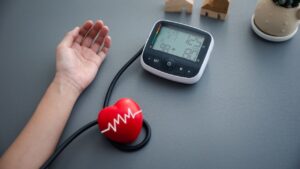In today’s fast-paced world, keeping track of our health is of paramount importance. One critical aspect of our health that demands attention is blood pressure monitoring. With various blood pressure monitoring devices flooding the market, it can be perplexing to determine which one suits your needs best. In this comprehensive guide, we’ll delve into the world of blood pressure monitoring devices, exploring the intricate interplay between features, accuracy, and convenience.
Understanding the Importance of Blood Pressure Monitoring
Before we delve into the various devices available, it’s crucial to underscore the significance of monitoring your blood pressure regularly. High blood pressure, or hypertension, can be a silent killer, often showing no symptoms until it’s too late. Regular monitoring allows you to detect and manage this condition effectively.
Traditional vs. Digital Blood Pressure Monitors

Traditional Blood Pressure Monitors
Traditional blood pressure monitors, often known as manual or sphygmomanometers, have been in use for decades. These devices require a stethoscope and a cuff that you inflate manually to measure your blood pressure. While they provide accurate results when used correctly, they might not be the most user-friendly option for everyone.
Digital Blood Pressure Monitors
On the other hand, digital blood pressure monitors have gained popularity due to their ease of use and convenience. These devices are automated and provide quick and accurate readings at the push of a button. They come in various forms, including wrist and upper arm cuffs, catering to different user preferences.
Factors to Consider When Choosing a Blood Pressure Monitor

When selecting the best blood pressure monitoring device for your needs, several factors come into play:
- Accuracy: The primary concern should always be accuracy. Ensure the device you choose provides reliable readings.
- Cuff Size: The cuff size should fit comfortably around your upper arm or wrist. An ill-fitting cuff can lead to inaccurate results.
- Memory and Data Storage: Some digital monitors offer the convenience of storing past readings, allowing you to track your blood pressure over time.
- Ease of Use: User-friendliness is crucial, especially for individuals who may not be tech-savvy.
- Portability: Consider whether you need a monitor that you can easily carry with you.
- Price: Blood pressure monitors come in various price ranges. Choose one that suits your budget without compromising on quality.
The Importance of Regular Monitoring

Regular monitoring of your blood pressure can provide invaluable insights into your health. It helps you and your healthcare provider make informed decisions about your well-being. Remember, it’s not just about knowing your blood pressure numbers but also about understanding what they mean for your health.
Conclusion
In conclusion, the best blood pressure monitoring device is the one that aligns with your specific needs and lifestyle. Whether you opt for a traditional manual monitor or a modern digital one, what matters most is consistent and accurate monitoring. So, take charge of your health, invest in a reliable blood pressure monitor, and keep track of your well-being effectively.
Frequently Asked Questions
- How often should I monitor my blood pressure? Regular monitoring is recommended, but consult your healthcare provider for personalized guidance.
- Can I use a wrist blood pressure monitor instead of an upper arm one? It depends on your preference and comfort, but both types can provide accurate readings when used correctly.
- Do I need a prescription to buy a blood pressure monitor? No, you can purchase one without a prescription from most pharmacies or online retailers.
- What is considered a normal blood pressure reading? A normal blood pressure reading is typically around 120/80 mm Hg, but it may vary from person to person.
- How can I ensure the accuracy of my blood pressure monitor? To ensure accuracy, follow the manufacturer’s instructions carefully and have your device calibrated or checked periodically.

